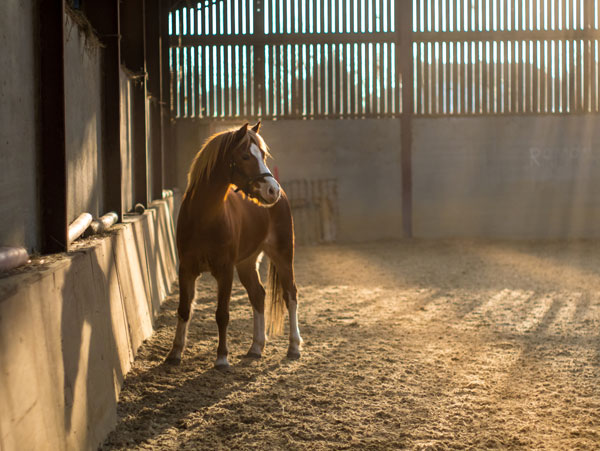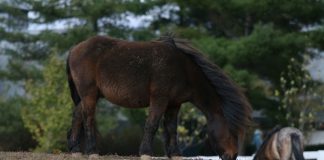
When University of Kentucky College of Agriculture, Food and Environment graduate student Staci McGill set out to learn more about the air quality of indoor horse arenas last year, she was surprised to discover there wasn’t any existing research available. So she forged the way with first-of-its-kind research, melding her passion for riding with her academic research interests.
The online survey garnered more than 450 respondents and initial findings indicate that 77% of respondents are concerned about dust, moisture levels and/or the lack of air movement.
“It’s mind-blowing that this hasn’t been done before,” said McGill, a graduate student in the Department of Biosystems and Agricultural Engineering. “We know these issues exist, but no one has ever documented the concerns.”
“This amazing team is an important collaboration. Together we can positively impact horse and human health by establishing conditions that are health protective,” said Kimberly Tumlin, assistant professor in the Department of Preventive Medicine and Environmental Health, College of Public Health. “We know that horse-human interactions have many positive outcomes. This research helps define environments and potential exposures that may affect the quality of these interactions.”
McGill’s team is releasing some of the initial findings through an infographic , and expects the study to generate several areas of additional research.
The facility design and use information shows trends with arena age and construction costs. An example of changing trends is lighting. The use of LEDs has increased while the use of metal halide lights has dramatically decreased. LEDs look to be surpassing even fluorescents in newly built arenas. The size of the arenas has shifted to greater square footages in newer arenas and, as expected, larger arenas also tend to be more expensive to build.
The definition of an indoor arena varies by where respondents live and how their climate impacts horse sport participation. Primary riding disciplines, wall and window configuration and footing materials, like the presence of fiber, all varied by region as well.
The major finding is that the arena is a complex environment. Facility design, management, footing, usage and amount of horse activity within the space all interact to affect the environment in an indoor arena.
McGill said next steps include tackling the three big issues of dust, moisture and lack of air movement using a systems approach. A multidisciplinary team is critical to providing solutions and guidance that will work for the equine industry. She is still interested in conducting site visits to facilities from all breeds and disciplines as part of this research. Facilities interested in a site visit or who have questions about the research should reach out to her directly at staci.mcgill@uky.edu.





